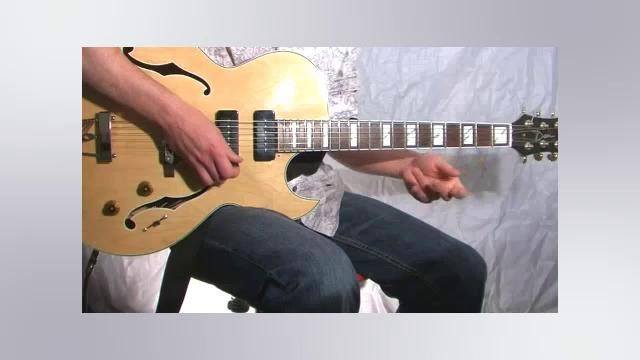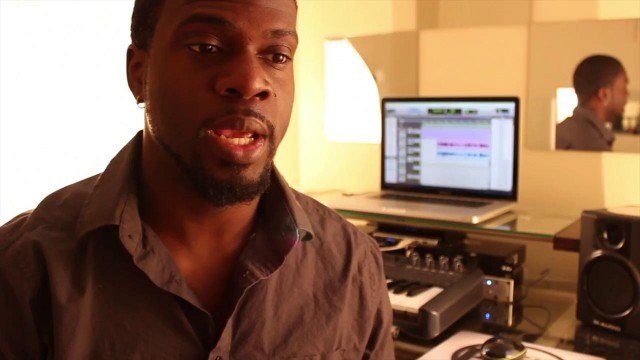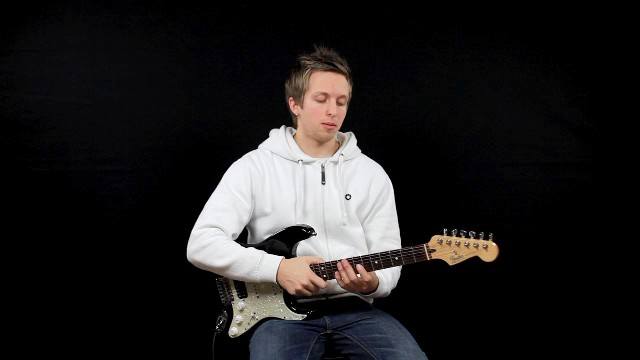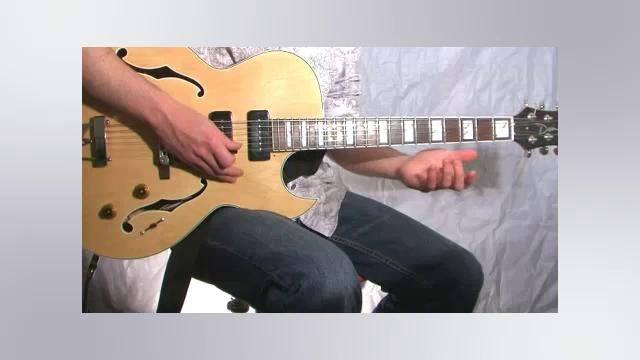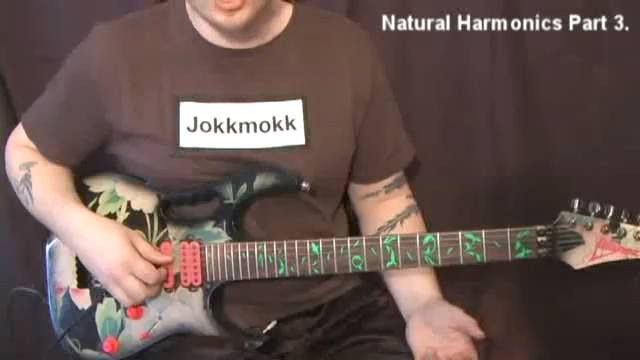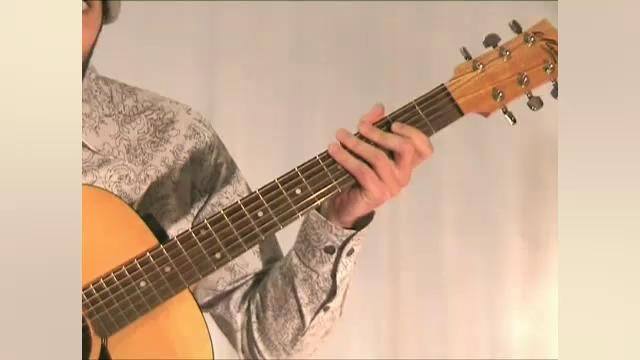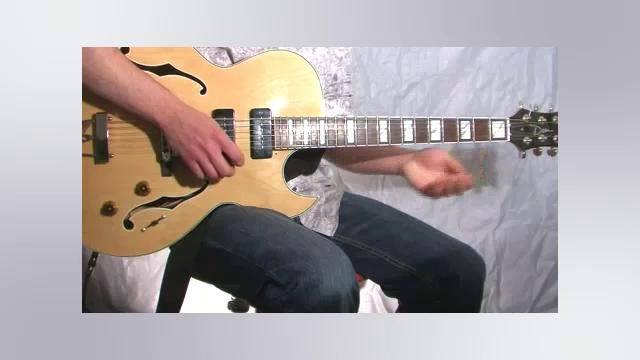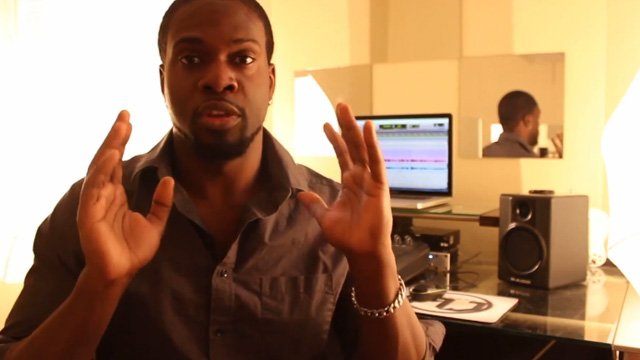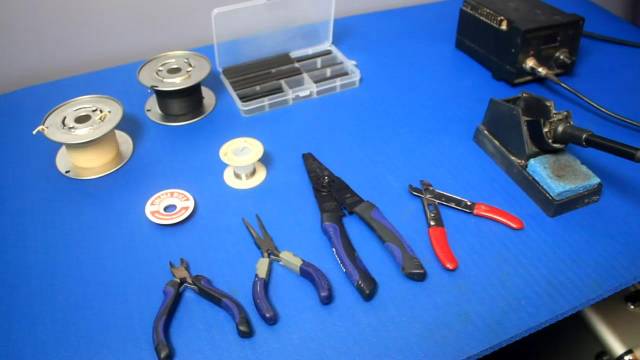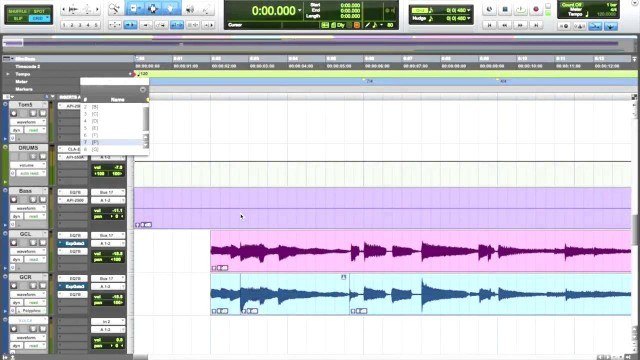Hello. In this lesson, we will be taking a look at note values and basic notation.
The most basic note is called the whole note (Ex.1). In a 4/4 time signature (which we will get to in another lesson), this note is the only note on the staff and is held for 4 beats. A whole note looks like a big empty oval. When played on the guitar, you hold the note from the very beginning of the measure to the very end. In other words, one whole note lasts the whole measure.
A half note (Ex.2) is exactly half of what a whole note is. So for this we will apply a little math. Since a whole note lasts a whole measure in 4/4, a half note lasts half a measure. This means a half note lasts 2 beats, which is half of the four beat duration of a whole note. To put it another way, you can put two half notes in a measure because two half notes equals a whole note. A half note looks like a whole note with a stem pointing either up or down, depending on the pitch of the tone. If the stem points down, it is to the left of the note head, but if it points up, it is to the right. When playing a half note, make sure the tone lasts a full two beats. If you let up after the first beat, you're only playing half of a half note, which is what we will discuss next.
Now let's move on. So if a half note is half of a whole note, what is half of a half note? Well, if you do the math and divide 1/2 by 2, you get 1/4, which means half of a half note is a quarter note. (Ex.3) Because a half note lasts 2 beats, a quarter note lasts one beat. To put it another way, you can fit 4 quarter notes in a measure; one to a beat. When you tap your foot to most songs, you're playing quarter notes. One, two, three, four. Each of those counts as a quarter note. A quarter note looks like a half note with the note head filled in.
Now, the next note division is going to be an eighth note. (Ex.4) To get this, we take a quarter note and divide it in half. Doing the math, 1/4 divided by 2=1/8. Just as there are 4 quarter notes in a measure of 4/4 time (4 x 1/4 = 1), each measure holds eight eighth notes. (8 x 1/8 = 1) To put it another way, there are 2 eighth notes for every quarter note (2 x 1/8 = 1/4) or two eight notes for every beat.
An eighth note looks like a quarter note with a flag on it. If you have two eighth notes together, the flag can be replaced with horizontal stems. (the flags don't have to be joined together, it's just easier to read that way)
Ok, you know where this is going. Half of an eighth note is a sixteenth note. (Ex. 5) (1/8 divided by 2 = 1/16) There are 16 sixteenth notes in a measure. (16 x 1/16 = 1) or four sixteenth notes per one-quarter note beat (4 x 1/16 = 1/4). A sixteenth note looks like a quarter note with 2 flags on it. As before, if you have 2 or more sixteenth notes together the flags may or may not be joined.
Now, it's good to know how to write them, but how do you communicate them? Just as you describe pitches by using letters, you describe rhythms by using numbers, and you only need to be able to count to 4! It starts simple, as being that each beat in a measure is counted as either one, two, three or four. So if your counting off 4 quarter notes, you'd count it as "one, two, three, four". If you want to talk about the fourth quarter note in a measure, you'd call it "four" as in "in the last measure, make sure you play a b flat on four."
If a quarter note is always one, two, three, four, then what about the notes that lie between them? Simple, you just count them as "and" as in "One and two and three and four and". You'd talk about an eighth note like "Make sure you play a b flat on the 'and' after three".
Now onto sixteenth notes. Using the nonsense syllables "e" and "ah", you can now represent the sixteenth notes between the eighth notes. So if you're counting a group of straight sixteenth notes, you'd count "one-e-and-ah, two-e-and-ah, three-e-and-ah, four-e-and-ah" Shown below is how to count the various groups of notes. (ex. 6)
Now if a note represents the duration of a pitch, then a rest represents time when you're not playing a note. Each note has a corresponding rest that goes with it. So if you have a whole rest, that lasts a whole measure, a half rest lasts half a measure and so on. Rests are used to indicate the spaces between the notes and are just as important as the notes you play. Shown below (ex. 7-8) are the different types of rests, starting with the whole rest and moving through the half, quarter, eight, and sixteenth rests.
The next type of note that you might encounter is the dotted note. (Ex. 9-11) The "dot" in a dotted note extends the duration of the note by half a beat. So for example, if you have a dotted quarter note, instead of lasting one beat, it would last one and a half beats. So when you see a dotted note, hold the note 50 percent longer than what you would normally. You also can have dotted rests, which work the same as dotted notes. When you see a dot after the rest, the rest should last one and a half times longer than the value of the main rest. (Don't worry about the rests in these, I put those there to complete the bar)
Another way to make a note longer is with a tie. (Ex. 12) When you see two or more notes tied together, you play them as if they were one note. For example, two quarter notes tied together equals one half note. Now there is another marking for when two notes are tied but on different spaces. This is called a slur. It's a way of indicating that two or more notes are to be played in a smoothly connected fashion rather than distinctly separating the notes.
Now there's another little oddity in rhythmic notation and that is the triplet, which is very important. (Ex. 13) When you see a number 3 over a group of 3 notes (or 3 rests - or any combination of notes and rests) you know that these three notes have to fit into a space that would normally hold just two notes. Triplets have more of a rolling feel than straight notes and counted as "trip-ah-let". You can have triplets of any note value, although quarter note triplets (where 3 of them are separated over 2 beats), eight note triplets (three on a single quarter note beat), and sixteenth note triplets (three in the space of a single eight note) are the most common.
Ok, this concludes the lesson. I hope you had fun. See ya!
 |




























